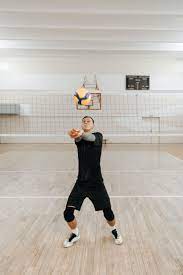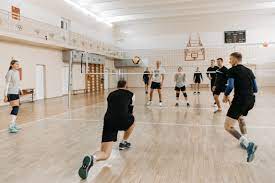Introduction
Ever watched a volleyball game and noticed some players standing on the sidelines? You’re not alone! It’s a common sight, but have you ever wondered why they’re there? Turns out, there’s a simple reason behind it, and it’s not just about taking a breather.
Let’s explore why volleyball players stand on the sidelines and what purpose they serve in the game.
Why do Volleyball Players Stand on Sidelines?
Strategic Observations
Players on the sidelines have a different view of the game, which helps them understand what’s going on. They can see what the other team is doing, notice any patterns, and then share important details with their teammates and coaches. This helps their team make better decisions during the game.
Mental Preparation
When players are on the sidelines, they can mentally prepare for their next turn on the court, focusing on their roles and responsibilities within the team. This helps them stay focused and ready to contribute effectively when they return to play.
Immediate Support
When players are on the sidelines, they’re in a prime position to offer immediate support and encouragement to their teammates who are on the court. This could be through verbal encouragement, gestures, or simply being present and engaged in the game.
When players hear cheers and words of encouragement from their teammates, it boosts their spirits and helps them concentrate on playing well. This positive support creates a feeling of unity and teamwork among the players.
Additionally, when teammates support each other like this, it strengthens their bond and makes them feel like they’re all in it together, working towards a common goal.
Furthermore, when players on the sidelines offer advice and feedback during breaks in the game, it enhances the team’s performance by providing valuable insights and strategies.
Overall, this combination of encouragement, camaraderie, and constructive feedback contributes to the team’s success on the court.

Coach Interaction
Standing on the sidelines allows for direct communication between players and coaches. This enables coaches to give feedback, make strategic changes, and offer guidance to players instantly.
This real-time interaction improves performance and strengthens teamwork on the court.
Rest and Recovery
Standing on the sidelines in volleyball lets players take a quick break when they’re not playing. They can rest, drink water, and get ready to play again. This helps them stay strong and do their best in the game.
Conclusion
So, next time you watch volleyball, remember: those players on the sidelines aren’t just taking a break. They’re there for a reason, whether it’s to support their team, analyze the game, or prepare for their next move. Everyone plays a vital role, on or off the court, in the quest for victory.
Are there specific rules regarding where players must stand on the sidelines?
Yes, according to volleyball rules, players waiting to enter the game must stand within the designated substitution zone, which is usually marked by lines on the court near the team benches. Players must be behind the substitution zone boundary until the substitution is allowed.
How do players know when they are allowed to substitute into the game?
Players can substitute into the game when signaled by the referee or when instructed by the coach during a stoppage in play, such as after a point is scored or during a timeout. Substitutions must be conducted within the rules, ensuring only one player enters and exits the court at a time.
What should players on the sidelines do when they are not actively participating in the game?
Players on the sidelines should stay focused, mentally prepared, and physically ready to enter the game when needed. They should also support their teammates and remain engaged in the match to contribute positively to the team’s performance.
Are there any restrictions on players’ activities while on the sidelines?
While on the sidelines, players must adhere to the rules and regulations of the game. They cannot interfere with the match or engage in any behavior that may distract or disrupt the flow of gameplay.
How do players on the sidelines contribute to the overall success of the team?
Players on the sidelines contribute to the team’s success by providing depth to the roster, offering strategic insights, maintaining team morale, and being ready to step in and make a difference when called upon during the match.
